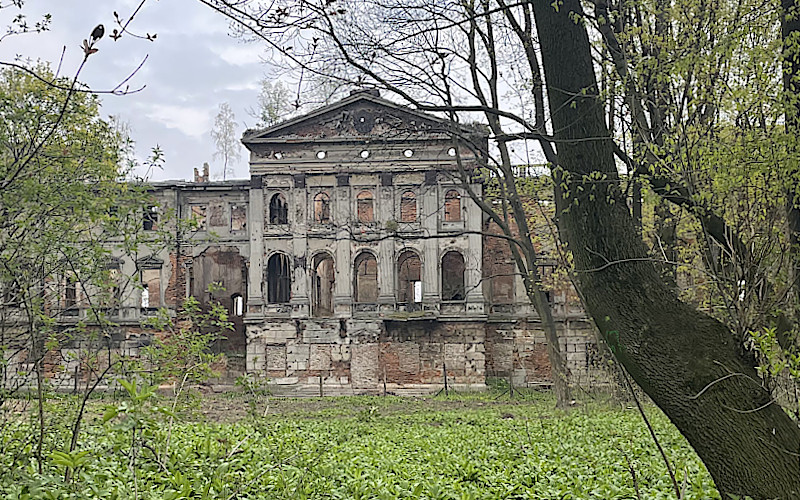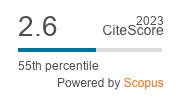Landscape understanding and values in extended public consultations on spatial planning in rural communes in Poland
DOI:
https://doi.org/10.3097/LO.2024.1124Keywords:
contemporary landscape challenges, rural landscape, extended public consultations, landscape in spatial planning, functions of landscape, landscape understanding, landscape valuesAbstract
A large part of spatial planning projects in Polish rural communes deals with landscape issues such as protection and planning. Besides legal regulations extended public consultations (EPCs) on spatial planning processes provide an opportunity to comprehensively address and negotiate landscape arguments. This research aims to identify the understanding and value of the concept of landscape by local communities in the examined EPC cases. This paper explores landscape issues through a systematic analysis (multiple-case study) of six cases of EPCs carried out in Poland between 2019 and 2022. The landscape was negotiated in terms of its various functions to provide value for aesthetics, culture, history, identity, recreation, and economy. In some cases, the landscape was used as an argument to promote a hidden agenda. In the rural communes, aesthetic functions of landscapes were frequently addressed, while natural, ecological, and climatic functions of the landscape were barely mentioned, suggesting that the understanding of landscape remains at a representative, cultural, and visual level, which differs from urban discourses that often focus on climatic and ecological functions of landscape. EPCs are a sound instrument to further integrate landscape as a common asset into spatial planning processes.
References
Ahn, S. (2019). Cultural Laboratory Seoul. Emergence, Narrative and Impact of Culturally Related Landscape Meanings. PhD Thesis, ETH Zurich. https://doi.org/10.3929/ethz-b-000415748
Antrop, M. (2004). Landscape change and the urbanization process in Europe. Landsc Urban Plan, 67, 9–26. https://doi.org/10.1016/S0169-2046(03)00026-4 DOI: https://doi.org/10.1016/S0169-2046(03)00026-4
Antrop, M., & Van Eetvelde, V. (2017). Landscape Perspectives: The Holistic Nature of Landscape (Vol. 23). Springer Netherlands. https://doi.org/10.1007/978-94-024-1183-6 DOI: https://doi.org/10.1007/978-94-024-1183-6
Arnstein, S. R. (1969). A Ladder Of Citizen Participation. Journal of the American Institute of Planners, 35(4), 216–224. https://doi.org/10.1080/01944366908977225 DOI: https://doi.org/10.1080/01944366908977225
Biedenweg, K., Williams, K., Cerveny, L., & Styers, D. (2019). Is recreation a landscape value? Exploring underlying values in landscape values mapping. Landscape and Urban Planning, 185, 24–27. https://doi.org/10.1016/j.landurbplan.2018.12.005 DOI: https://doi.org/10.1016/j.landurbplan.2018.12.005
Bil, J. S., Buława, B., & Świerzawski, J. (2021). Mental Health and the City in the Post-COVID-19 Era. Sustain, 13(14), 7533. https://doi.org/10.3390/su13147533 DOI: https://doi.org/10.3390/su13147533
Bogdanowski, J. (1994). Metoda jednostek i wnętrz architektoniczno-krajobrazowych (JARK-WAK) w studiach i projektowaniu. Politechnika Krakowska.
Bregin, D., Chustecka, M., & Sarata, N. (2019). Niezbędnik moderatorki. Fundacja Wspomagania Wsi. http://fundacjawspomaganiawsi.pl/wp-content/uploads/2019/05/FINAL_WWWniezbednikmoderatorki.pdf
Bryl-Roman, W. (2019). Neglected landscapes: On the aesthetics of the Polish urban scenery. Studia Miejskie, 36. https://doi.org/10.25167/sm.1039 DOI: https://doi.org/10.25167/sm.1039
Bucher, A. (2016). Landscape Theories in Transition: Shifting Realities and Multiperspective Perception. In Girot Christophe & Imhof Dora (Eds.), Thinking the Contemporary Landscape. Princeton Architectural Press.
Buława, P., Buława, B., & Borsa, M. (2022). Environmental Personhood as a Landscape Planning Tool. J Eur Environ Plan, 19(3), 161–179. https://doi.org/doi.org/10.1163/18760104-19030003 DOI: https://doi.org/10.1163/18760104-19030003
Butler, A. (2014). Developing Theory of Public Involvement in Landscape Planning: Democratising Landscape. https://doi.org/10.13140/RG.2.2.18419.32800
Butler, A., & Berglund, U. (2014). Landscape Character Assessment as an Approach to Understanding Public Interests within the European Landscape Convention. Landscape Research, 39. https://doi.org/10.1080/01426397.2012.716404 DOI: https://doi.org/10.1080/01426397.2012.716404
Calderon, C., & Butler, A. (2020). Politicising the landscape: A theoretical contribution towards the development of participation in landscape planning. Landscape Research, 45(2), 152–163. https://doi.org/10.1080/01426397.2019.1594739 DOI: https://doi.org/10.1080/01426397.2019.1594739
Chustecka, M. (2019). Wszystko jasne. Fundacja Wspomagania Wsi. https://fundacjawspomaganiawsi.pl/wp-content/uploads/2019/08/wszystkojasne_online.pdf
Clos, J. (2017). Implementing the new urban agenda by strengthening urban-rural linkages. https://unhabitat.org/sites/default/files/download-manager-files/Urban%20Rural%20Linkages%20for%20implementing%20the%20New%20Urban%20Agenda_08112017.pdf
Creighton, J. L. (2005). The Public Participation Handbook. Josser-Bass.
Cullinan, C. (2011). Wild Law: A Manifesto for Earth Justice. Green Books.
Dz.U. 2022 poz. 840. (2022). Ustawa z dnia 23 lipca 2003 r. o ochronie zabytków i opiece nad zabytkami (Dz. U. 2003 Nr 162 poz. 1568). https://isap.sejm.gov.pl/isap.nsf/download.xsp/WDU20220000840/U/D20220840Lj.pdf
Dz.U. 2023 poz. 1336. (2023). Ustawa z dnia 16 kwietnia 2004 r. o ochronie przyrody (Dz. U. 2004 Nr 92 poz. 880).
Dz.U. z 2022, Poz. 503. (2022). Ustawa z dnia 27 marca 2003 r. o planowaniu i zagospodarowaniu przestrzennym (in force until 23.09.2023) (Dz.U. 2022 r., poz. 503).
Dz.U. z 2023, poz. 977. (2023). Ustawa z dnia 27 marca 2003 r. o planowaniu i zagospodarowaniu przestrzennym (in force since 24.09.2023).
European Landscape Convention and reference documents. (2000). www.coe.int/Conventioneuropeennedupaysage
Fagerholm, N., Torralba, M., Moreno, G., Girardello, M., Herzog, F., Aviron, S., Burgess, P., Crous-Duran, J., Ferreiro-Domínguez, N., Graves, A., Hartel, T., Măcicăsan, V., Kay, S., Pantera, A., Varga, A., & Plieninger, T. (2019). Cross-site analysis of perceived ecosystem service benefits in multifunctional landscapes. Glob Environ, 56, 134–147. https://doi.org/10.1016/j.gloenvcha.2019.04.002 DOI: https://doi.org/10.1016/j.gloenvcha.2019.04.002
Garcia-Martin, M., Fagerholm, N., Bieling, C., Gounaridis, D., Kizos, T., Printsmann, A., Müller, M., Lieskovský, J., & Plieninger, T. (2017). Participatory mapping of landscape values in a Pan-European perspective. Landscape Ecology, 32(11), 2133–2150. https://doi.org/10.1007/s10980-017-0531-x DOI: https://doi.org/10.1007/s10980-017-0531-x
Girot, C. (2017). Breaking Ground: A Return to Topology. In C. Girot & D. Imhof (Eds.), Thinking the Contemporary Landscape (pp. 136–154). Princeton Architectural Press.
Gobster, P. H., Nassauer, J. I., Daniel, T. C., & Fry, G. (2007). The shared landscape: what does aesthetics have to do with ecology? Landscape Ecology, 22(7), 959–972. https://doi.org/10.1007/s10980-007-9110-x DOI: https://doi.org/10.1007/s10980-007-9110-x
Groat L., & Wang D. (2013). Architectural Research Methods. Wiley.
Hansen, A. S. (2021). Understanding recreational landscapes – a review and discussion. Landscape Research, 46(1), 128–141. https://doi.org/10.1080/01426397.2020.1833320 DOI: https://doi.org/10.1080/01426397.2020.1833320
Hoyle, H., Norton, B., Dunnett, N., Richards, J. P., Russell, J. M., & Warren, P. (2018). Plant species or flower colour diversity? Identifying the drivers of public and invertebrate response to designed annual meadows. Landscape and Urban Planning, 180, 103–113. https://doi.org/10.1016/j.landurbplan.2018.08.017 DOI: https://doi.org/10.1016/j.landurbplan.2018.08.017
Jackson, J. B. (1957). Der Pfad des Fremden. In B. Franzen & S. Krebs (Eds.), Landschaftstheorie. Texte der Cultural Landscape Studies (2005) (pp. 16–28). Verlag der Buchhandlung Walther König.
Jones, M., & Stenseke, M. (2011). The Issue of Public Participation in the European Landscape Convention. In The European Landscape Convention: Challenges of Participation (pp. 1–23). https://doi.org/10.1007/978-90-481-9932-7_1 DOI: https://doi.org/10.1007/978-90-481-9932-7_1
Kaur, E., Palang, H., & Sooväli, H. (2004). Landscapes in change—opposing attitudes in Saaremaa, Estonia. Landscape and Urban Planning, 67(1), 109–120. https://doi.org/10.1016/S0169-2046(03)00032-X DOI: https://doi.org/10.1016/S0169-2046(03)00032-X
Kulig, M., Miśkowiec, M., & Ogórek, P. (2018). Public participation in revitalization of rural areas – case study of the Olkusz commune. Studia Obszarów Wiejskich, 49. https://doi.org/doi.org/10.7163/SOW.49.2 DOI: https://doi.org/10.7163/SOW.49.2
Martín, R., & Yepes, V. (2023). Landscape Values in a Marina in Granada (Spain): Enhancing Landscape Management through Public Participation. Land, 12(2). https://doi.org/10.3390/land12020492 DOI: https://doi.org/10.3390/land12020492
Moosavi, S., Hurlimann, A., Nielsen, J., Bush, J., Warren Myers, G., & March, A. (2023). Transforming the agency and influence of landscape architects in climate change actions: An empirical analysis of barriers and facilitators. Landscape and Urban Planning, 234, 104735. https://doi.org/10.1016/j.landurbplan.2023.104735 DOI: https://doi.org/10.1016/j.landurbplan.2023.104735
Olwig, K. (2007). The practice of landscape “Conventions” and the just landscape: The case of the European Landscape Convention. Landscape Research - LANDSC RES, 32, 579–594. https://doi.org/10.1080/01426390701552738 DOI: https://doi.org/10.1080/01426390701552738
Pluta, M. (2017). Spatial planning in Poland in the context of ‘inspire’ rules and amendment to the Spatial Planning and Development Act. Geomatics, Landmanagement and Landscape, 4, 159–168. https://doi.org/10.15576/GLL/2016.4.159 DOI: https://doi.org/10.15576/GLL/2016.4.159
Povilanskas, R., Baziukė, D., Dučinskas, K., & Urbis, A. (2016). Can visitors visually distinguish successive coastal landscapes? A case study from the Curonian Spit (Lithuania). Ocean & Coastal Management, 119, 109–118. https://doi.org/10.1016/j.ocecoaman.2015.10.002 DOI: https://doi.org/10.1016/j.ocecoaman.2015.10.002
Price, C. (2017). Landscape Economics (2nd ed.). Palgrave Macmillan. DOI: https://doi.org/10.1007/978-3-319-54873-9
Ramos, I. L., Bianchi, P., Bernardo, F., & Eetvelde, V. Van. (2019). What matters to people? Exploring contents of landscape identity at the local scale. Landscape Research, 44(3), 320–336. https://doi.org/10.1080/01426397.2019.1579901 DOI: https://doi.org/10.1080/01426397.2019.1579901
Santé, I., Tubío, J. M., & Miranda, D. (2020). Public participation in defining landscape planning scenarios and landscape quality objectives (LQO): Landscape Guidelines for Galicia (NW Spain) case study. Land Use Policy, 94, 104559. https://doi.org/10.1016/j.landusepol.2020.104559 DOI: https://doi.org/10.1016/j.landusepol.2020.104559
Schoukens, H. (2018). Granting Legal Personhood to Nature in the European Union: Contemplating a Legal (R)evolution to Avoid an Ecological Collapse? (Part 1). J Eur Environ Plan, 15(3–4), 309–332. https://doi.org/10.1163/18760104-01503005 DOI: https://doi.org/10.1163/18760104-01503005
Schoukens, H. (2019). Granting Legal Personhood to Nature in the European Union: Contemplating a Legal (R)evolution to Avoid an Ecological Collapse? (Part ii). J Eur Environ Plan, 16(1), 65–90. https://doi.org/10.1163/18760104-01601005 DOI: https://doi.org/10.1163/18760104-01601005
Solecka, I., & Dworniczak, Ł. (2016). Obywatele kształtują krajobraz miasta. Aspekty przestrzenne i funkcjonalne inicjatyw zgłaszanych w ramach Wrocławskiego Budżetu Obywatelskiego 2013-2014. Wydawnictwo Uniwersytetu Ekonomicznego we Wrocławiu.
Southon, G. E., Jorgensen, A., Dunnett, N., Hoyle, H., & Evans, K. L. (2018). Perceived species-richness in urban green spaces: Cues, accuracy and well-being impacts. Landscape and Urban Planning, 172, 1–10. https://doi.org/10.1016/j.landurbplan.2017.12.002 DOI: https://doi.org/10.1016/j.landurbplan.2017.12.002
Stone C.D. (1972). Should Trees Have Standing? Toward Legal Rights for Natural Objects. Southern California Law Review, 45, 450–501.
Strecker, A. (2018). Landscape Protection in International Law. Oxford University Press. The new Leipzig Charter: Synthesis and focus. (2021). Bundesinstitut für Bau-, Stadt- und Raumforschung. DOI: https://doi.org/10.1093/oso/9780198826248.001.0001
Tribot, A.-S., Deter, J., & Mouquet, N. (2018). Integrating the aesthetic value of landscapes and biological diversity. Proceedings of the Royal Society B: Biological Sciences, 285(1886), 20180971. https://doi.org/10.1098/rspb.2018.0971 DOI: https://doi.org/10.1098/rspb.2018.0971
Tuan, Y.-F. (1979). Landscapes of Fear. University of Minnesota Press. http://www.jstor.org/stable/10.5749/j.ctt3fh6c3
Yin, R. K. (2017). Case Study Research and Applications: Design and Methods. SAGE Publications.
Żarska, B., Fornal-Pieniak, B., & Zaraś-Januszkiewicz, E. (2014). Landscape protection and planning: Selected issues. Warsaw University of Life Sciences - SGGW Press.

Downloads
Published
How to Cite
Issue
Section
License
Copyright (c) 2024 Bartłomiej Buława, Susann Ahn

This work is licensed under a Creative Commons Attribution 4.0 International License.










